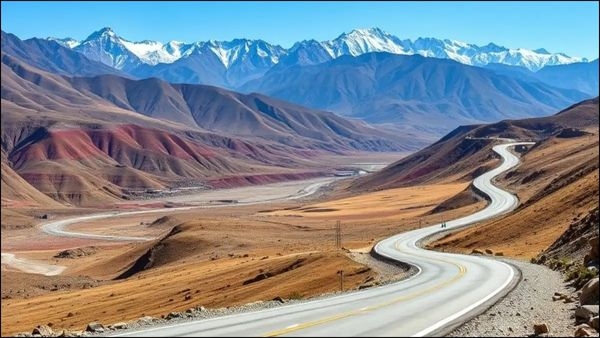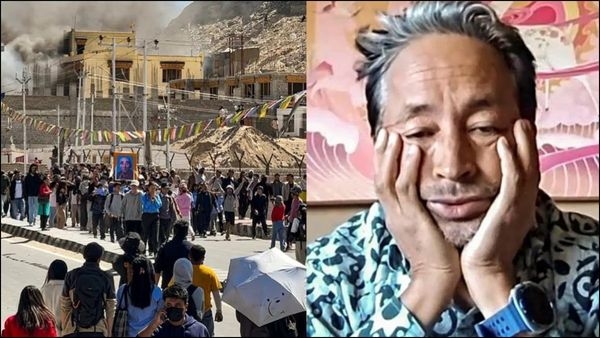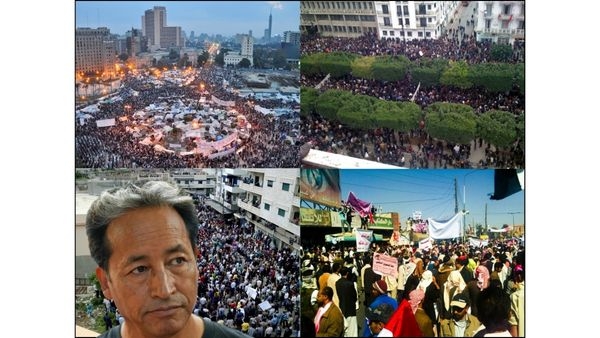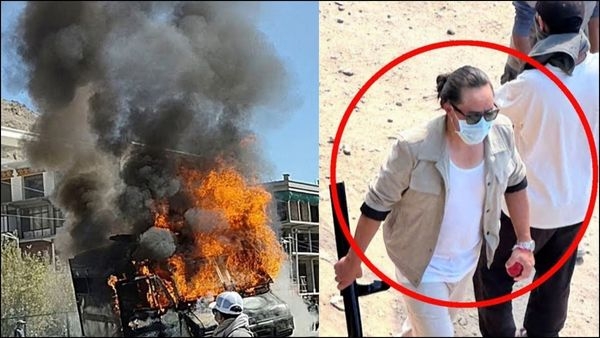How Sonam Wangchuk Misled Ladakh’s Youth and Sparked Bloodshed in the Valley
Did Sonam Wangchuk’s hunger strikes for Ladakh’s rights truly represent people’s grievances or were they calculated moves that ignited unrest and violence?
Total Views |

For decades, Sonam Wangchuk was celebrated across India as an educational reformer, innovator and scientist. But in recent months, his actions have shifted from innovation to incitement, transforming his earlier hunger strikes into platforms for inflammatory rhetoric that pushed Ladakh into chaos.
What began as a symbolic hunger strike quickly degenerated into a stage for fiery speeches. Repeated references to foreign uprisings, laced with warnings of civil unrest, acted as fuel in an already tense environment. His so-called “climate fast” and subsequent hunger strikes were less about environmental protection and sustainability and more about a calculated bid for political limelight.
Most disturbing was Wangchuk’s invocation of foreign protest movements. By drawing parallels with the Arab Spring and Nepal’s Gen Z uprising, he dangerously internationalised Ladakh’s local grievances. Such rhetoric sent a dangerous signal to agitators: that confrontation, mob action and violence were legitimate tools to press demands.
The result was tragic. On 24 September, Ladakh witnessed violent clashes that left four people dead and over 90 injured. Wangchuk has since been accused of inciting mobs with provocative statements during his hunger strike, ostensibly in support of statehood and Ladakh’s inclusion under the Sixth Schedule.
From UT to Statehood: Demand or Political Ambition?

When Ladakh was granted Union Territory status in 2019, the region became a direct beneficiary of Central Government aid and development. Major projects followed, including a central university, hotel management institute, colleges, roads, bridges and financial packages worth crores.
Yet suspicion grew among some that outsiders would seize Ladakhi land and resources. In 2023, Wangchuk began his outdoor hunger strikes, demanding “constitutional safeguards.” His protests quickly gained support from the Leh Apex Body (LAB) and the Kargil Democratic Alliance (KDA). By 2024, sit-ins, padyatras and strikes became regular features, and the demands expanded to statehood, inclusion under the Sixth Schedule, a Public Service Commission and two Lok Sabha seats.
The Union Government agreed to some demands and initiated structured dialogue. The Home Ministry reassured Ladakhi leaders that further negotiations were scheduled for late September and early October. Yet, even as talks were underway, violence broke out on the streets of Leh.
If Talks Were On, Why Ignite Unrest?

The Home Ministry confirmed that multiple rounds of formal and informal discussions had already taken place with Ladakhi leaders. Yet, on the eve of fresh negotiations, mobs turned violent.
Wangchuk’s repeated references to the Arab Spring and Nepal’s Gen Z protests suggested he was transplanting foreign models of violent uprising into Ladakh. His rhetoric no longer echoed democratic negotiation but instead veered into revolutionary agitation: “The government has denied us democracy and employment. Circumstances could escalate into a crisis.”
Wangchuk’s Dangerous Rhetoric

Through social media, Wangchuk openly invoked the Arab Spring - a movement that triggered revolutions and civil wars across the Middle East. He declared:
“If the government does not meet our demands, I will dedicate my life to overthrowing it. Do you know about the Arab Spring? One man triggered revolutions in six countries. Can’t we do the same?”
In another speech, he compared India unfavourably with Pakistan and China, claiming Ladakh had fewer rights than Tibet or Baltistan. He praised regime change movements in Nepal, Bangladesh and Sri Lanka, urging Ladakhi youth to follow suit. His constant refrain that Delhi was denying jobs and protection to Ladakh seemed designed to inflame the region’s youth.
NGO Under Scrutiny: FCRA Violations
Wangchuk’s NGO, SECMOL, is now under investigation for violations of FCRA rules. Questions are being raised about foreign funding, overseas influence and whether resources were diverted to fuel unrest. This has raised suspicions about whether Ladakh’s protests were truly organic or orchestrated with external patronage.
Congress’s Role Under the Scanner

The unrest also exposed political collusion. Videos emerged showing Congress councillor Tsepang inciting mobs with weapons. BJP leaders alleged a Congress-Wangchuk nexus aimed at destabilising Ladakh.
Congress, which never granted Ladakh UT status during its long rule, now appears aligned with protests against the very move that Ladakhis once celebrated.
Conclusion
On 5 August 2019, Ladakh’s streets erupted with joy when the Narendra Modi government granted Union Territory status. Wangchuk himself folded his hands in gratitude, calling it the fulfilment of a 30-year-old dream. Religious and social leaders wrote letters of thanks to Delhi.
Fast forward to September 2025: the same streets have turned into battlegrounds, with bloodshed and destruction. Evidence suggests this unrest was not spontaneous, but part of a calculated conspiracy against India, with Wangchuk playing a central role.
Sonam Wangchuk has since been booked under the National Security Act, ensuring he cannot continue misleading the masses or destabilising Ladakh.
Article by

Kewali Kabir Jain
Journalism Student, Makhanlal Chaturvedi National University of Journalism and Communication

